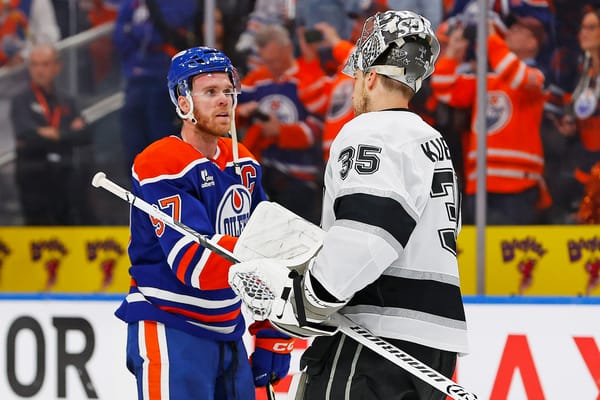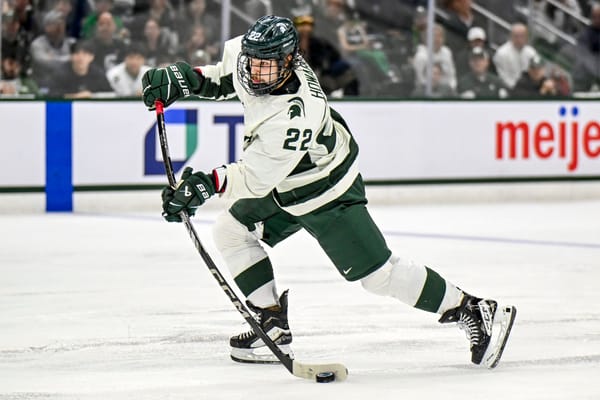A (Very) Early Look at the Rangers Power Play
It’s only been a few games but we’re already getting to see what the New York Rangers power play is going to look like for the rest of the season. With a new coach and plenty of new players on the roster, there are already a few key changes in the Rangers power play formation. However, despite the turnover, a large portion of the Rangers strategy with the man advantage is the same and is still being used by Coach Quinn. I won’t delve too much into the numbers since the sample sizes are so small so far, but tactically we can already start to see a few patterns emerging.
*data does not include the Rangers past two games against the Avalanche and the Capitals
Shift More Towards Dallas Cut Entry
It’s hard to draw too many conclusions based on only a five game sample but it seems like Coach Quinn has a preference for a more basic Dallas Cut breakout style as opposed to more complex entries like drop passes. The Dallas Cut formation has the puck carrier skate up to the defensive blue line where he has two players skating up one side and another player coming up the opposite side. The fifth forward starts near the offensive blue line and skates horizontally across as the play proceeds.
So far the Rangers have used the Dallas Cut formation over 36% of the time this season. This is a substantial increase from the proportion of times they used the Dallas Cut last season, as from last year’s data the Rangers only used it 16% of the time. This difference has mostly come at the expense of the drop pass, which has been a lot less common throughout the Rangers power play entries so far.
Overall, the Dallas Cut has not been super effective, and has contributed to the larger problem of the Rangers inability to enter the zone with control. Although they’ve been able to cross the offensive blue line with some success, they have only done so with control on 20% of their Dallas Cut entries.
Three Back Formation
The Three Back Formation isn’t a very common entry strategy but over the past few seasons the Rangers have shown their willingness to use it from time to time. The “Three Back Formation” as I call it is a power play breakout strategy where two forwards are posted at the top of the offensive blueline while the three remaining forwards are farther back in the defensive end. The puck carrier takes the puck in front of the net and is flanked by one player on each side of him streaking up each side of the rink.
Here’s a good example of the Three Back formation from an Edmonton Oilers game last year.
The Rangers haven’t used it a lot so far this season but they’ve never used it as one of their main entry strategies. While they’ve only lined up in a Three Back Formation 7% of the time this year, last season they only used it 8% of the time.
In the few times they do use it though, it’s generally been successful. Every three back attempt in my sample from last year was successful and that trend has continued this season. Last year J.T. Miller was mostly the main puck carrier for the formation while him and Mika Zibanejad were on the ice, but with Miller gone, Zibanejad has picked up the responsibility. It looks like the conventional set up for the Rangers will be Shattenkirk feeding him the puck up the right side of the ice where Zibanejad can (usually) enter with control.
Excellent Offensive Zone Play
While the Rangers haven’t particularly excelled at entering the zone, they have done a great job once in the offensive zone. The Rangers power play showed flashes of brilliance last year (especially towards the beginning of the season) and they’re returning this year with plenty of skilled players manning the first unit. A first unit of Chris Kreider, Mats Zuccarello, Zibanejad, Pavel Buchnevich, and Kevin Shattenkirk has loads of potential, with each player bringing valuable skills to the Rangers power play.
Zibanejad’s shot is still a key feature of the power play. While his bread and butter is a slap shot one-timer, he’s also got a wrist shot that can be just as dangerous.
Kreider has always been known for his speed and physicality and this has made him an excellent net front power play presence for the Rangers. His natural drive to the front of the net combined with the speed to get him there makes him a force to reckon with.
Zuccarello’s offensive abilities seem to go a bit underrated across the league, as many don’t get to see his excellent passing and vision, especially when on the power play. Zuccarello being on one of the half-boards gives the Rangers a stellar playmaker who can move the puck around and feed guys like Zibanejad and Shattenkirk looking for shots.
Overall, the Rangers have shown (last season and this year) that they can move the puck well across the offensive zone.
This attempt didn’t result in a goal (or even an actual shot attempt) but the important thing was that the right idea was there. Throughout most of the Rangers power plays the puck is moving fast across the ice and getting through to the dangerous areas, even if it hasn’t translated into goals yet this season. Even though the record hasn’t shown it, the Rangers have been playing solid, entertaining hockey this season. The power play hasn’t had the goals yet but it’s only a matter of time before the Rangers start putting more in the back of the net.




